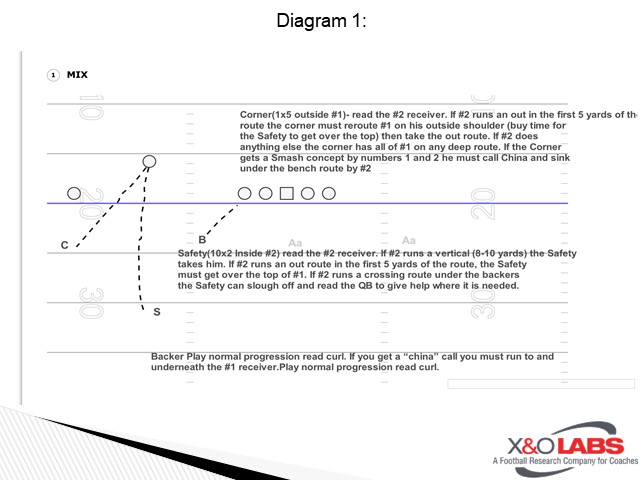By Jason Brown
Linebackers Coach
St. Charles Catholic High School (LA)
It is truly an honor to once again write an article for X and O Labs and to represent St. Charles Catholic and our entire staff. As I was thinking about topics I kept coming back to using Quarters coverage and its adjustments to defend today’s offenses. Diversity in offensive systems dictates defenses to have a lead coverage system that can address variability for you throughout the year. I know we have all heard that Quarters coverage is too multiple and has too many adjustments. Most detractors say Quarters creates complexity and indecision therefore effectively meaning you really have “no answers at all.” Don’t believe that kind of thinking. It has been my experience in 28 years of coaching that kids can learn anything that YOU can teach. As with any article that I write this one comes with the same disclaimer. I am not trying to sell you on anything. I am only sharing with you my thoughts and the thoughts of our staff in implementing this very effective coverage scheme.
One of the questions that defensive coordinators have been trying to answer is “how do I get enough people in the box without giving up a ton of stuff in the passing game?” The next big question is how I take the run/pass conflict off enough people so that we can effectively defend the RPO games of today without just hoping that the Quarterback just misreads it or misses the guy. It is my contention that the closeness of the Safeties alignment to the interior of the formation, the adjustments that the coverage inherently has, and the natural disguise and multiplicity of the split safety look makes it the best option to answer these questions.
“Mix” Coverage:
When we start teaching Quarters coverage the first adjustment, we teach our players is “Mix.” We like “Mix” as a basic adjustment to our Quarters coverage concept. Also, like it to two normally spaced twin receivers. We really like it more to the boundary because it guarantees us the spacing from the #1 and #2 receivers can’t get too wide.

This puts the triangle (Safety, Linebacker, Corner) on a number two read. The alignment rules for the corner is one yard outside and five yards deep off a normal spaced number one receiver. The Safety is aligned two yards inside and ten yards deep on a normal spaced (for today's offenses) number two receiver and two yards outside and ten yards deep on a tightly spaced number two receiver. The outside linebacker is in an apex alignment (between number two and the ball) on the number two receiver. The outside linebacker (inside rotator) is a normal progression read curl player on the “Mix” side. If the number two receiver runs an out route in the first 5 yards of the route the Corner will collision the outside shoulder of the number one receiver then look to break on the out route of number two. The Safety will see the out of number two and drive to an inside and on top position on the number one receiver to this side. If number two goes vertical the Safety will buy the route man to man and the Corner will take all of number one deep. If the number two drags under the backers, the Safety will squeeze for 3 steps then sink off and read the QB because he is extra now. The Corner will take all of number one deep again. We like this concept to two normally spaced twin receivers. Careful when you are playing “Mix” to the field because that can turn in to too much space for the Safety to cover.
To study game film of this concept, click on the video below:









